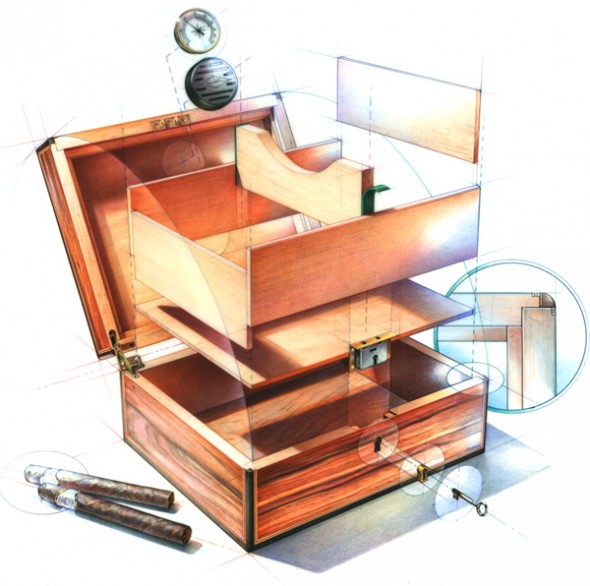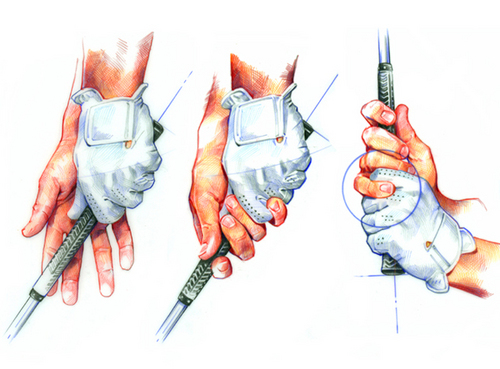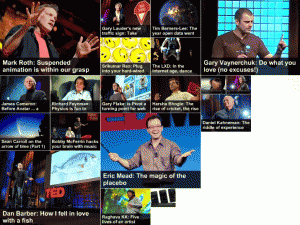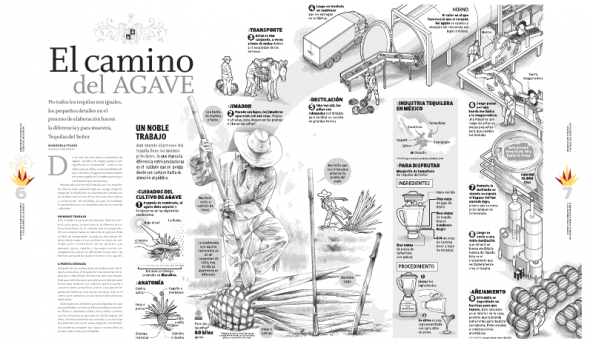We’ve added a Resources page collecting all of the useful links and resources we’ve posted in the past. As always, if you have a link or any sort of suggestion, let us know!
Information and Decision Making
A recent research paper on organizational behavior and human decision processes looked at how people give and get advice, and how likely that advice is to affect their decisions.
The four types of advice explored were:
- Advice for were recommendations for a particular option
- Advice against were recommendations against a particular option
- Decision support was suggestions on how to make the decision
- Information was facts about the options that the decision maker didn’t know
In general, decision makers found all types of advice useful. However, the one type of advice that decision makers found most useful, and had the most impact on their decisions was information.
Participants felt that advice for, advice against and decision support robbed them of some independence in their decision. Information allowed them to make an informed decision, and would most likely influence future decisions. Furthermore, participants felt more confident about the decisions they made when advice came in the form of information.
Technical illustration is a highly informational medium, and this research is objective support to the power of information in the decision making process. Let your clients know that technical illustration deserves a place on the front lines of their sales efforts!
Full story via Psychology Today
Auto Show Eyecandy
Most people go to auto shows to see the latest bunch of cars they’ll never be able to afford. I go for things like this:

Bugatti Veyron - Máté Petrány
That’s a Bugatti Veyron stripped of it’s panels, and displayed in all it’s glory.
To me, displays like this are the best part of auto shows: the exploded and animated engine, the gutted drive train, the new Mustang that’s been cut in half so that you can walk between it. Seeing into everyday objects and learning how they work has always fascinated me.
I’ve also found that auto shows are a great opportunity for photo reference. Not only may you find a gem like this, but you can also observe all the various textures on the car under ideal lighting conditions.
You can see the rest of the pictures over at Jalopnik, here.
Elements of Drawing with Bruce Morser

Bruce Morser, a freelance illustrator with a unique and highly technical colored pencil technique, teaches the course Elements of Drawing: A Creative Approach at the School of Visual Concepts in Seattle, Washington. (Unfortunately, the spring 2010 class is full.)
“Drawing is a wonderful skill, but it also serves as a key for unlocking personal creativity. Many artists speak of great ideas emerging once their pencil starts moving across the paper. Each of the 10 class sessions will be divided between instruction in the basic skills of drawing, as well as an exploration of the creative process through techniques that enhance your own sense of creativity. Whether you’re refocusing on drawing or have no prior experience, this is your class.”
Morser has created images for a variety of clients including Apple, National Geographic, NASA, Nike, Starbucks, Smithsonian, Boeing, Microsoft and IBM. His subject matter ranges from technical to medical to fashion and portraiture.
TED Talks
Self promotion is one of the most challenging marketing tools as a freelance technical illustrator. First, you need to have a great idea, then illustrate it well and find time to stop procrastinating and get it done!
I find that inspiration for new illustration ideas can be found through so many different resources. One of my favorite ways to gain inspiration for working on promotional pieces is through TED.com.
TED (Technology, Entertainment and Design) brings experts in these three areas together in a yearly conference to spread their ideas and innovations. The conference allows innovative speakers a limited amount of time to passionately discuss their area of expertise.
The website TED.com has great videos that are an inspiration to the work that I do. From a technological standpoint, certain speakers make me question many things and how they work in the world today. I always find inspiration to illustrate new technologies, or new ways to look at design. I enjoy listening to the speakers as I work on my illustrations.
Categories on TED.com include technology, entertainment, design, business science, culture, arts and global issues. Some speakers are humorous, some serious. But all of them have an inspirational message if you are open to it!
What are some websites that you use to find inspiration to motivate you?
Malofiej 18 – Award Winning Infographics
Malofiej is the Society for News Design‘s annual infographics competition. At Malofiej 18 last week, a jury of 13 international graphics editors and art directors awarded medals in a myriad of categories including Breaking News, One-Column and Interactive.
More images and links as well as a full list of award winners at Infographic News
The Coolest Things Already Exist – Concept Art Inspiration
Concept art is a very closely related profession to technical illustration. Concept artists are responsible for designing vehicles, props and environments mainly for the entertainment industry, including film, television and video games. These designs require a high degree of precision, and an amazing grasp of three-dimensionality since their designs will be manufactured either to scale, fullsize or in 3D. The designs often reference actual vehicles, objects or environments to imbue a sense of near-reality. In fact, a rule of thumb is 70% reality, 30% fantasy.
Sometimes, though, that formula can be 100% reality.
Pictured is a Soviet-built cold war era “ground effects” tank. These things were like proto-hovercraft. They would be pushed along by jet turbines and use airfoils to force a pocket of air underneath the craft. This would allow the vehicle to hover above water (and potentially land), move with very little friction — and as an added bonus, be undetectable by radar.
Where do you find inspiration for your concept designs? Let us know in the comments.
Source (via Boing Boing)
Contracts – You Want WHAT?
I was recently approached by a publisher of several software/tutorial magazines about doing a 6-page technical illustration primer. The pay was laughable, but the contract was downright insulting:
3.2 Anything that you […] produce or invent for [us] as part of, or in connection with, the Contract shall be [our] property absolutely and you shall assign or procure the assignment of all Intellectual Property in such things (whether existing now or arising in the future) free from all encumbrances to [us]. You also agree to obtain all releases that are necessary to enable [us] to exploit the Work as it sees fit. If you provide any of your own pre-existing Intellectual Property as part of the Contract you hereby grant [us] and, if relevant, Clients to whom the relevant Work has been provided, an irrevocable, perpetual, royalty free licence to use such Intellectual Property in relation to Work similar or equivalent to the Work.
Worse, still:
3.3 Where you are the author of the Work, you waive absolutely your right to be identified as the author of the Work […] and your right to object to derogatory treatment of it (granted by section 80 of that Act) and, so far as is legally possible, any broadly equivalent rights you may have anywhere in the world. Where you are not the author of the Work you undertake to obtain equivalent waivers from the authors.
…and in case they missed anything:
7.6 This contract may be reviewed and/or amended at any time by [us].
[Emphasis is mine]
Even if I was ready to work for next to nothing, even if I was willing to hand over all rights to whatever I created, even if I convinced myself that the exposure from a project like this was worth the work involved, they wanted me to waive my right to be identified as the author of the work. Oh and they could modify the contract at any time.
Illustrators — Read your contracts. Understand them. If they have bogus clauses, ask for changes or reject them outright.
What bogus clauses have you gotten on contracts? Let us know in the comments!
Ask a Freelancer
Hey I’ve got a question for you freelancers.
I’ve got it in my head that freelancing is this wondrous thing where I get to work my own hours, and more importantly, live where I want to. I dream of living in a shack in the woods on a lake, or on an island somewhere, or just traveling around like some kind of gypsy nomad. Can you do that kind of thing (obviously dependent on internet availability) or do you need to stay closer to your big clients? Does all of your interaction with your clients happen through email/video conference/phone calls or do you meet face to face?
If you can live where ever you want to why did you choose to live where you do now?
Non-Disclosure Agreements
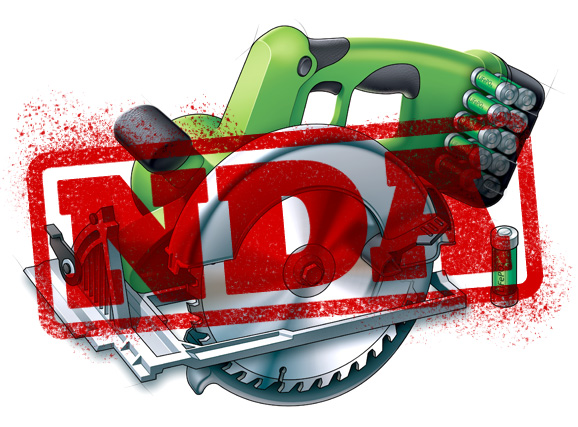
Technical Illustration and Non-Disclosure Agreements
Almost every project I take on involves signing a Non-Disclosure Agreement of some sort. An NDA is a contract that protects the client as well as the illustrator from legal and financial liability should confidential information related to the project fall in the hands of a third party.
A client with a patent pending wouldn’t want their illustrator disclosing details of a project to a competitor (or anyone for that matter). On the other hand, the illustrator needs to show work in their portfolio in order to bring in more work. The NDA contract ideally strikes a balance between the needs of the two parties.
For example, they may agree that everything is to be kept under wraps until the project is completed and published by the client. After that, the illustrator is free to use the sketches, roughs and finals for promotional purposes or even reuse or resale. This is a typical NDA clause for magazines
They may agree that all roughs, reference materials and correspondence be kept confidential, and that the illustrator can use only the final image. This is typical when working with science and technology firms.
Or the client may insist that the project be kept strictly confidential in perpetuity (Forever. Forever ever.). Because an illustrator needs to show work to get work, a clause like this seriously restricts future work opportunities. This factor must be taken into consideration when negotiating a fee for the project.
How to Get the Most out of NDA Negotiations
- Understand your client’s needs. Clients often use boilerplate NDAs, meaning they’re often more restrictive than they need to be. Figure out what aspects are important to the client, and propose that the other restrictions be loosened.
- Explain your needs. The client most likely hired you because of the work they saw in your portfolio. You might be missing out on the next job because you can’t show your work from this one. Explain to the client how that affects your fees.
- Just ask. A contract usually states that changes can be made with express written consent. Once a project concludes, send the client a friendly follow-up email expressing your pride in the work and your desire to include it in your portfolio. Keep a copy of the email along with the NDA contract.
- Deal with it. Sometimes a client really really needs absolute confidentiality. Try to work it into your fees – you don’t want this becoming standard practice. Use self-assigned projects to keep your portfolio updated and keep getting the work you want.
A non-disclosure agreement can work for you or against you. Read it. Understand it. Negotiate it. Abide by it!
How do you deal with non-disclosure agreements? Let us know in the comments!
